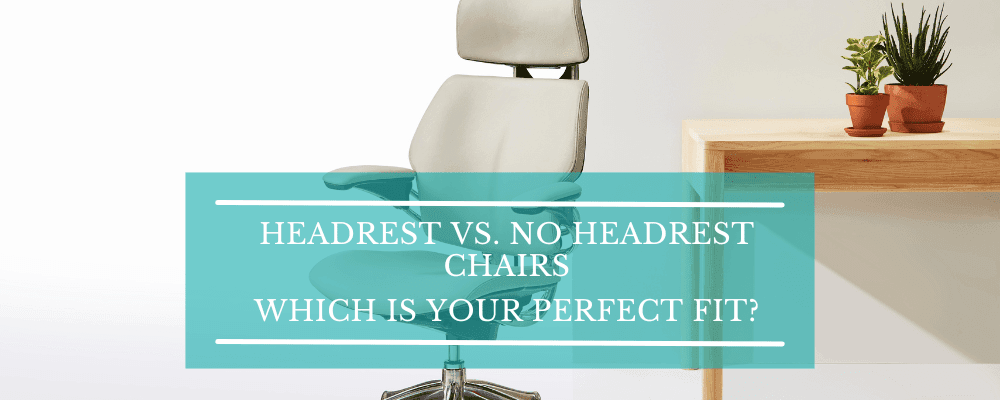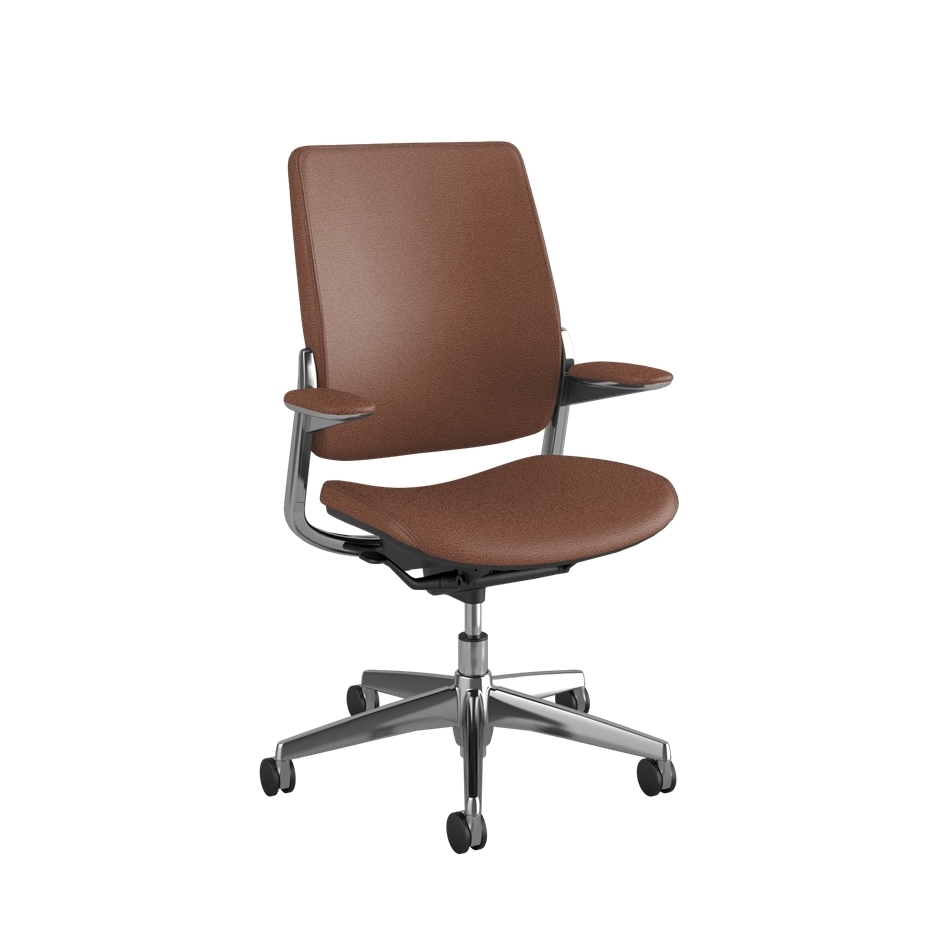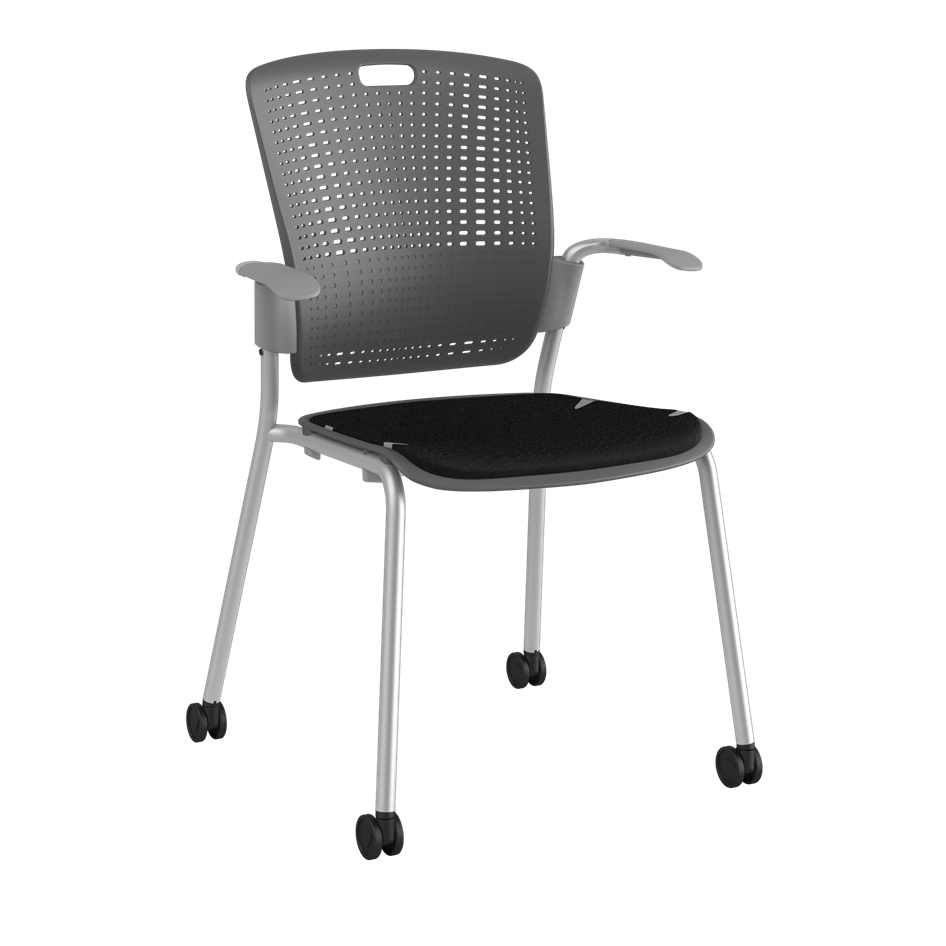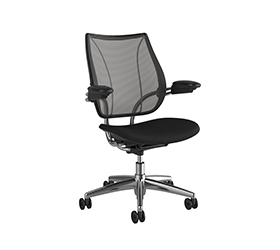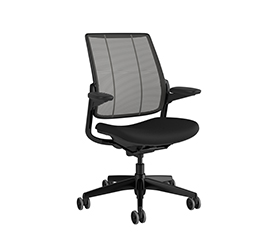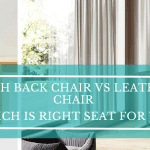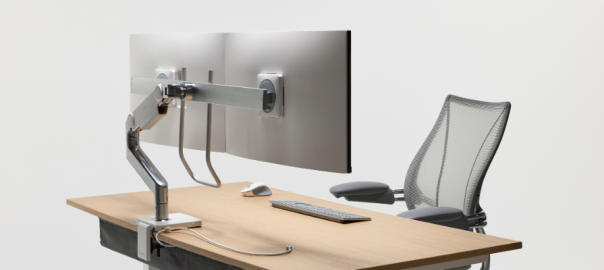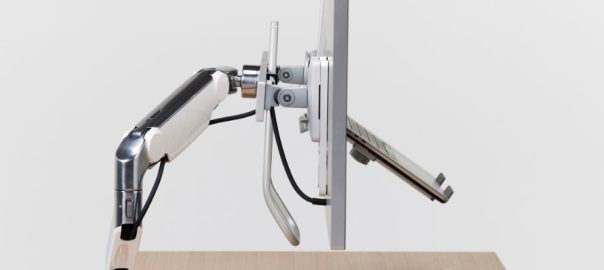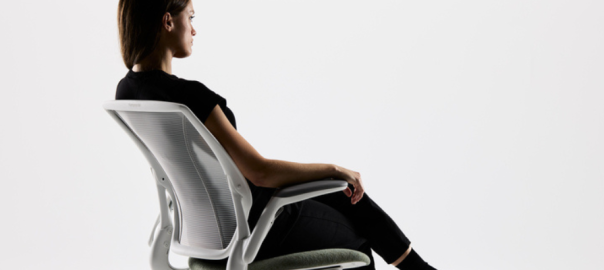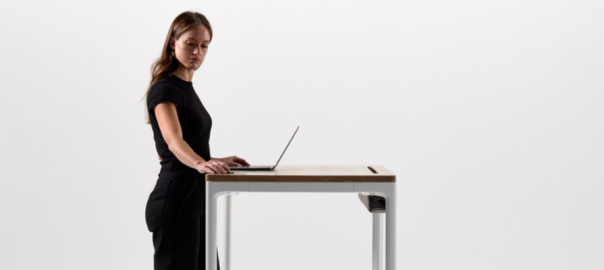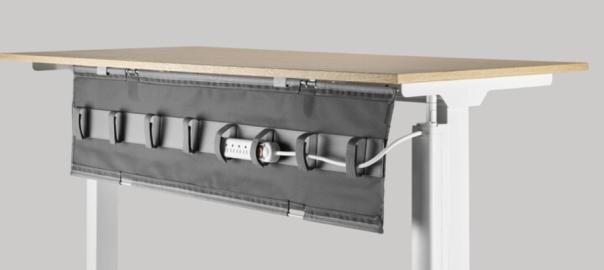“Why do my back and neck hurt when I sit?” Most people with desk jobs ask themselves at some point. Sitting for long hours results in work-related musculoskeletal issues, including stiffness and discomfort in various parts of the body.
The prevalence of work-related musculoskeletal disorders (MSD) was observed as follows: neck (45%), shoulders (5%), upper back (38%), wrist/hand (8%), lower back (52%), knees (23%), and ankle/feet (4%), with the lower back being the most affected region. 1
Fortunately, ergonomic chairs are the ultimate solution to back pain, as they help tackle these problems by promoting good posture and minimizing strain. They’re the most crucial and used piece of furniture for employees—on-site or remote—who spend a significant portion of their workday sitting. However, when it comes to choosing an office chair, a debate simmers: ergonomic headrest chair vs no headrest chair? This age-old question sparks discussion on comfort, support, and ultimately, the best fit for your specific needs.
However, including or excluding a headrest for an office chair considerably affects its overall functionality and suitability for various individuals. This blog post will explain the pros and cons of both models, helping you decide which ergonomic office chair best suits your needs.
Ergonomic Headrest Chairs vs No Headrest Chairs
Discover the optimal office chair tailored to your needs by comparing ergonomic headrest chairs vs no headrest chairs.
Headrest Chairs
Ergonomic headrest chairs take the standard ergonomic design a step further by including an adjustable headrest. These headrests for office chairs offer additional support for your neck and upper back during long periods of sitting. They contain a padded cushion attached to the back of the task chair, stretching upward to provide a convenient resting place for your head.
While not all ergonomic chairs have headrests, they are an added luxury for those seeking optimal support and comfort while working in front of PCs all day.
The Science Behind Headrest Support
Headrests for office chairs draw from spinal alignment principles. These ergonomic product features are often neglected but are critical to providing comfort and support to people who spend a long time on their smartphones or glaring at a monitor.
Let’s discuss this in detail. The average weight of an adult head is 5-6.3 Kg 2. When you lean forward by some degrees, the weight apparently increases. As a result, the neck muscles strain to hold the head upright, putting extra stress on the discs in the neck and spine.3
A headrest for the office chair supports the head, reducing strain and keeping the cervical spine (neck) in a neutral position. When the head and neck are adequately supported, maintaining an upright posture becomes easier, which reduces the risk of developing backaches.
Types of Ergonomic Headrest Chairs
Ergonomic headrest chairs contain the following categories based on the adjustability level they offer:
- Fixed Headrest Chairs
Fixed headrest chairs provide basic neck support but lack adjustability. They are pre-positioned at a specific height and angle and have no adjustable features, which may work for some people. These headrests for office chairs exist in multiple shapes and sizes, with some offering more contouring than others. You’ll find them on executive chairs and some high-back office chairs.
- Height-Adjustable Headrest Chairs
As the name suggests, these ergonomic chairs come with headrests that you can move up and down according to your height to perfectly align with your neck and back. As a result, you do not have to sacrifice your back’s natural “S” curve in an effort to “fit into” the ergonomic office chair. Such height-adjustable headrests for office chairs are necessary to ensure proper spinal alignment.
- Angle-Adjustable Headrest Chairs
Chairs with angle-adjustable headrests allow you to change the tilt angle of the headrest pad in addition to its height. By tilting the angle, you can find the optimal level of support for your posture and preferred sitting style, minimizing strain on your neck and upper back. These headrests for office chairs are ideal for people who tend to recline slightly in their chairs or those with particular neck needs.
- 3D Adjustable Headrests Chairs
These headrest chairs offer the most customization, allowing you to adjust the height, angle, and sometimes even the depth of the headrest for optimal comfort and support. This allows for even more precise positioning, cradling your head comfortably and providing support that moves with you for better overall comfort and reduced neck strain.
Moreover, the at-scale adjustability of these headrests for office chairs allows for even more personalized ergonomic support, accommodating a wider variety of heights and body types.
Enhanced Headrest Features and Adjustability
Headrests for office chairs boast features to maximize comfort and support for your upper body. The following are the must-have features in high-quality ergonomic chairs with headrests:
- Adjustability: This feature tops the list when it comes to ergonomic headrest chairs, as it helps achieve individual comfort and support. As discussed already, these office chairs offer three types of customizations: height, angle, and depth adjustments.
- Padding: Most headrests for office chairs are padded for comfort, with varying firmness depending on the chair. Some might even provide contoured padding for better neck cradling.
- Material: Ergonomic headrest chairs are mostly made from breathable mesh material, ideal for people who find traditional padded headrests too hot or uncomfortable. Additionally, mesh headrests for office chairs maintain a consistent look and feel.
- Detachability: Some task chairs let you remove the headrest entirely if you prefer a chair without one for a while. Detachable headrests allow you to customize your chair’s feel and look.
Benefits of Headrest-Equipped Ergonomic Chairs
Apart from getting rid of ergonomic hazards, including neck, back, and shoulder strains due to improper posture, headrest office chairs provide the following benefits:
- Better Blood Flow
Slouching and hunching restrict blood circulation to the head and neck. This hampered circulation leads to multiple issues, such as cold hands and feet, increased fluid retention, and reduced supply of oxygen and nutrients to the body’s tissues. 4 By keeping your spine aligned, headrests for office chairs help improve blood flow, resulting in enhanced alertness and reduced headaches.
- Improved Productivity
When your head and neck are supported properly, you can work with greater comfort and productivity because you are not in pain. Chairs with ergonomic headrests support good posture and foster an environment at work where productivity is maximized.
- Enhanced Relaxation And Reduced Stress
A well-adjusted headrest for an office chair lets you rest your head back during short breaks or while leaning back in your chair to change positions during the workday. That way, you can relax by taking time away from your tasks at hand.
Other than that, having a headrest and a backrest that reclines makes it convenient to listen to audio clips or make calls during work sessions and well-earned breaks.
All of these are also essential for reducing stress because they provide a cozy space for you to unwind. Over time, this results in a more favorable work environment.
- Perform Multiple Tasks
Ergonomic task chairs with adjustable headrests enable you to adapt your seating posture based on various tasks. For instance, when typing or writing, you want to adjust the headrest of the office chair to subtly support the back of your head. This helps maintain a neutral neck posture and decreases eye strain.
- Accommodate Various Body Types
Adjustable headrest chairs are built to accommodate people of various heights and physiques, guaranteeing a pleasant working experience for all. You can align your head and eyes with the line of sight when you adjust the headrest of an office chair to your preference, for example, while reading or conducting research on a computer. This mitigates neck and eye strain, allowing for longer periods of more focused browsing.
It’s no wonder why are office chairs so expensive, considering the benefits and features they bring to the table.
Tips for Using Ergonomic Headrest Chairs
Here are some important tips for users with headrest-equipped ergonomic chairs:
- Height and Angle: An office chair’s headrest should support your head rather than force you to slouch or thrust it forward. Adjust the height accordingly. For active support while working, tilt the headrest slightly forward. For passive support during breaks, a more neutral or slightly backward tilt works fine.
- Consider the Material: Mesh headrests help keep you cool by providing better airflow. Padded fabric ones offer more neck cradling but are warmer and the most difficult to clean. Leather or vinyl headrests can be easily cleaned, but the padding will make the headrest for an office chair extra warm. Choose what suits you best.
- Lean Back: If your task chair reclines, use the headrest for support while leaning back momentarily. However, avoid being in a reclined position for long, as this can offset the ergonomic advantage.
- Take Necessary Breaks: Even with a headrest, take short breaks throughout the workday to move around and stretch your neck and back muscles. Regular breaks are key to a healthy work-life balance. They boost focus and productivity, leading to better physical well-being and overall happiness. 5
So, do you need a headrest for an office chair? Considering these crucial benefits of ergonomics in the workplace, buying a headrest-equipped ergonomic chair should be a no-brainer. That said, let’s discuss the pros and cons of task chairs without headrests.
No Headrest Chairs
The name itself suggests that no headrest ergonomic chairs eliminate the need for a neck cushion. Explore the unique support offered by ergonomic chairs without a neck cushion.
The Appeal of Minimalist Design
Minimalist design reigns supreme in offices! Headrest-free chairs offer a sleek, modern look without the bulk. They prioritize core ergonomic features like lumbar support and breathability for comfort, all while maximizing space and design versatility. This makes them a perfect fit for contemporary workspaces.
Benefits of No Headrest Ergonomic Chairs
No headrest ergonomic chairs, lacking dedicated neck support, provide a slew of advantages that serve specific sitting preferences and work styles. Here are the benefits of ergonomic chairs without a headrest:
- A Wider Range of Motion
Ergonomic office chairs without headrests eliminate any restrictions on movement. You get to enjoy greater freedom to move and switch postures frequently throughout the workday. That way, you can adapt to multiple tasks without losing your concentration. The absence of a headrest for the office chair makes it easier to reach forward and lean forward, as well as to move around freely. People who have dynamic sitting styles will benefit from this flexibility.
- Aesthetically Pleasing
Ergonomic office chairs without headrests boast a sleeker appearance and take up less visual space. This makes them a preferred choice for people who prioritize their workstation’s overall look and feel. A streamlined, minimalist workspace is organized, effective, and devoid of clutter, which enables you to work with optimal focus and productivity.
- Cost-Effective
No headrest office chairs usually come with a lower price tag than their counterparts with headrests. This affordability can be a determining factor for budget-conscious people seeking ergonomics without going overboard or those who don’t require extensive neck and upper back support all or most of the time.
Limitations of No Headrest Ergonomic Chairs
No headrest office chairs, while offering an excellent option for employees, do have drawbacks to consider.
- Reduced Neck and Head Support: No headrests for office chairs translate to discomfort or fatigue, especially for people who lean back in their chairs for short breaks or prefer resting their heads during long workdays. This is especially troublesome for people with an existing neck strain.
- Greater Reliance on Core Strength: Without a headrest for passive support, you increasingly depend on active core engagement to maintain proper posture. This becomes daunting for people with weak core muscles who work long hours, causing slouching and back pain over time.
- Doesn’t Suit Everyone: Taller people with longer necks might find no headrest task chairs less comfortable as their heads have nowhere to rest upon. The lack of a headrest for proper head and neck alignment results in discomfort, especially if the backrest isn’t tall enough.
- Restricted Adjustability: While no headrest ergonomic chairs emphasize essential features like lumbar support, certain more affordable models might not have enough options for neck adjustability. This makes it even harder to find the most suitable position for your head and neck.
Tips for Using No Headrest Ergonomic Chairs
Follow these tips to squeeze out the maximum from ergonomic chairs without headrests:
- Lumbar Support: Adjust the lumbar support to easily fit the natural “S” curve of your back. If you realize you need some additional lower back support, place a lumbar roll behind your lower back while seated.
- Seat Height and Depth: Adjust the seat height so that your feet rest flat on the ground with your knees equal to or slightly lower than your hips.6
- Consider a Neck Pillow: For additional neck support during breaks, use a small neck pillow to rest your head on the chair’s back.
- Conduct workouts: Regularly exercising to strengthen your back and core muscles helps improve posture and reduce strain, especially when using an ergonomic chair without a headrest.
Ergonomic Headrest Chair Vs No Headrest Chair: Who’s The Winner?
The battle between ergonomic headrest chairs vs no headrest chairs is complex yet conclusive. In fact, both seating options offer compelling upsides.
So, when do you need a headrest for an office chair? If you struggle with neck or upper back pain or crave a comfy place to rest your head during breaks, an ergonomic chair with a headrest is the best choice.
Moreover, if your work involves sitting for extended durations, a headrest for an office chair is crucial for enhanced comfort and reduced strain. Furthermore, headrest chairs are ideal if you perform diverse tasks and want to adjust your seating position according to the task at hand. Their height, depth, and angle adjustability make them a preferred choice among employees.
On the flip side, no-headrest ergonomic chairs are a must-pick if you change postures often and need freedom of movement while working. Besides, this office furniture is an easy addition for those who want to keep their workstations uncluttered and organized without sacrificing aesthetics.
Lastly, office chairs without headrests find favor with those who want to experience the basic ergonomic perks without spending much money.
Beyond Headrests: Prioritizing Comfort and Ergonomics
Ultimately, choosing between an ergonomic headrest chair vs no-headrest chair hinges on your unique preferences, body type, and work style. The best ergonomic office chair is the one that keeps you comfortable and supports your natural posture and movements throughout your workday. No matter your decision on the headrest debate, remember that your overall health should always come first.
FAQ
Is Headrest Important For Office Chair?
Yes, a headrest is necessary for an office chair. It supports your neck and head, minimizing strain and encouraging appropriate posture, particularly during lengthy hours of sitting. A properly fitted headrest promotes spinal alignment, relieves strain on the cervical spine, and reduces neck pain and discomfort. For the best results, make sure the headrest is adjustable to your height and offers enough support based on your seating posture. Purchasing a chair with a strong headrest can improve comfort and overall ergonomic support in your workplace.

